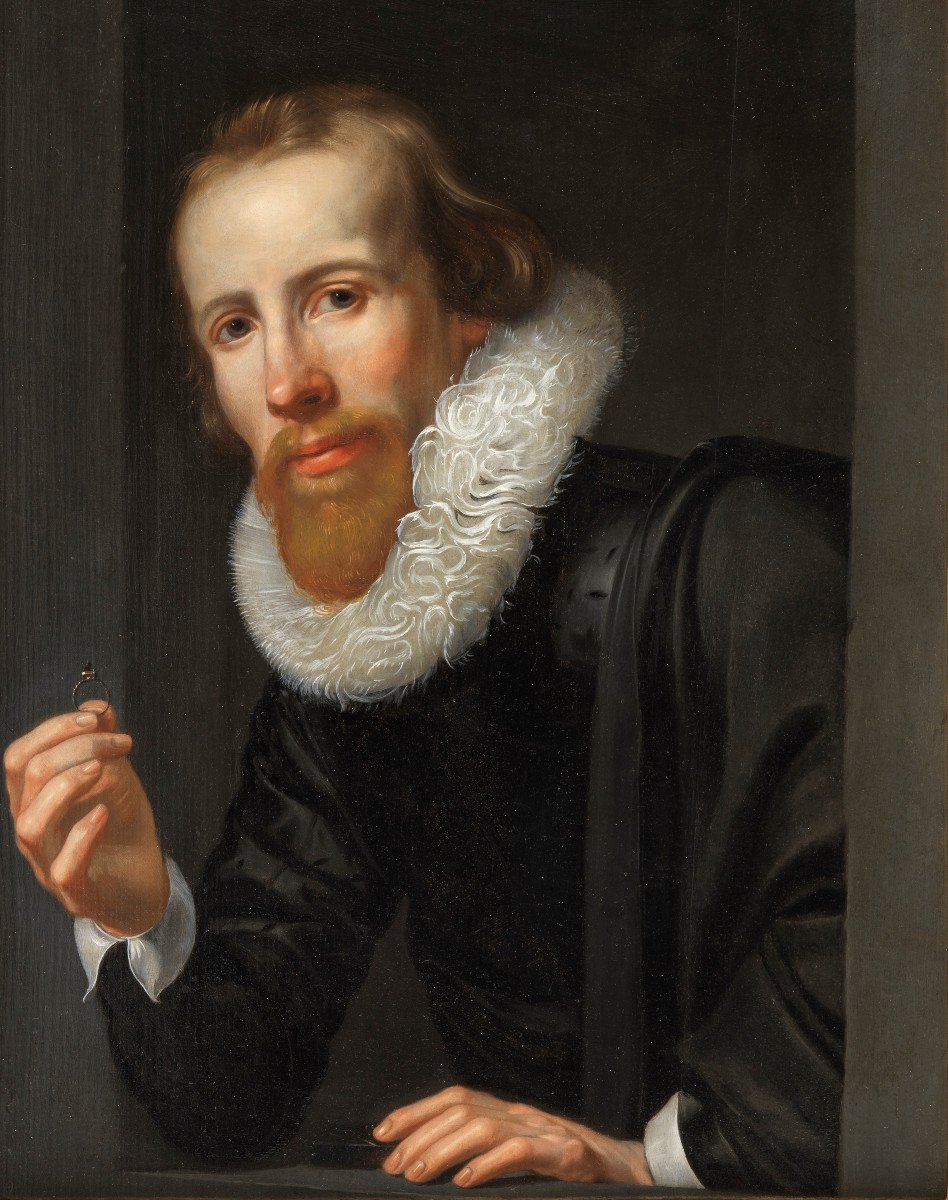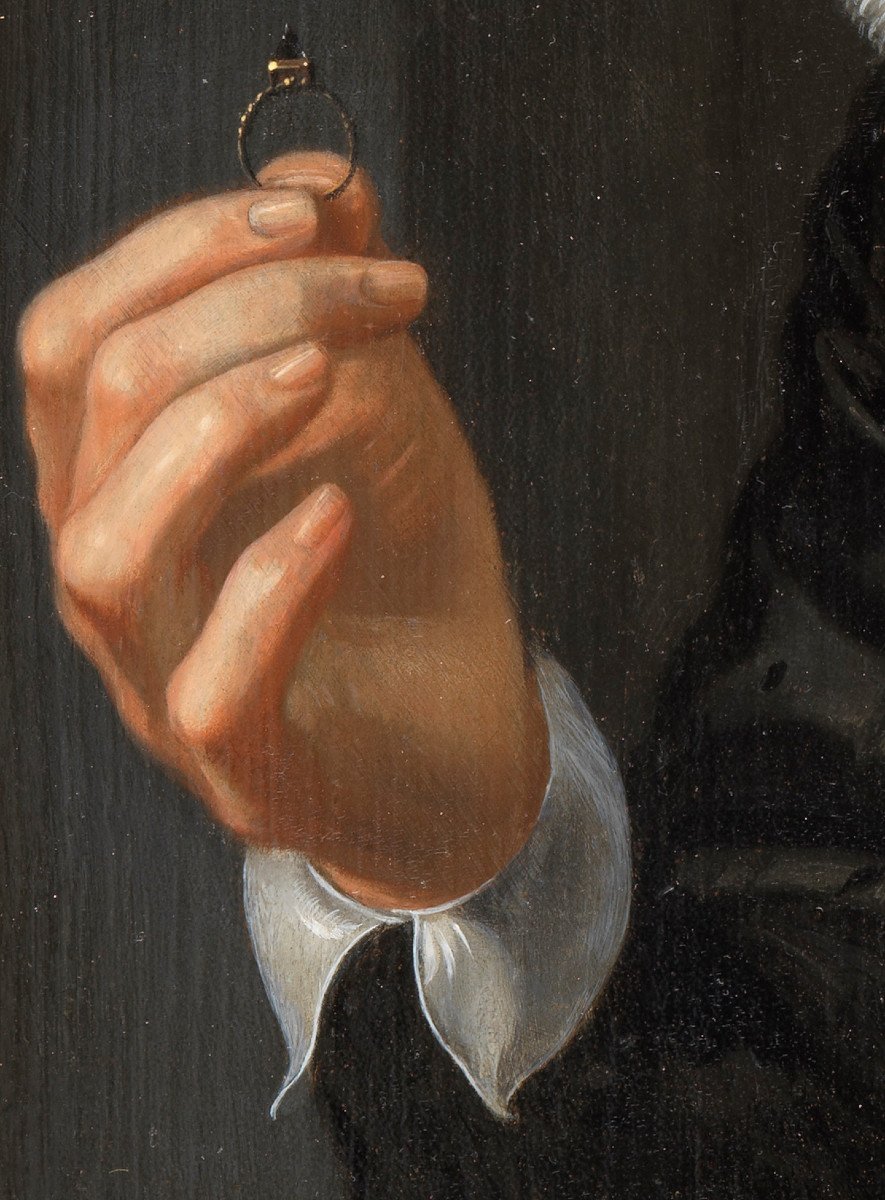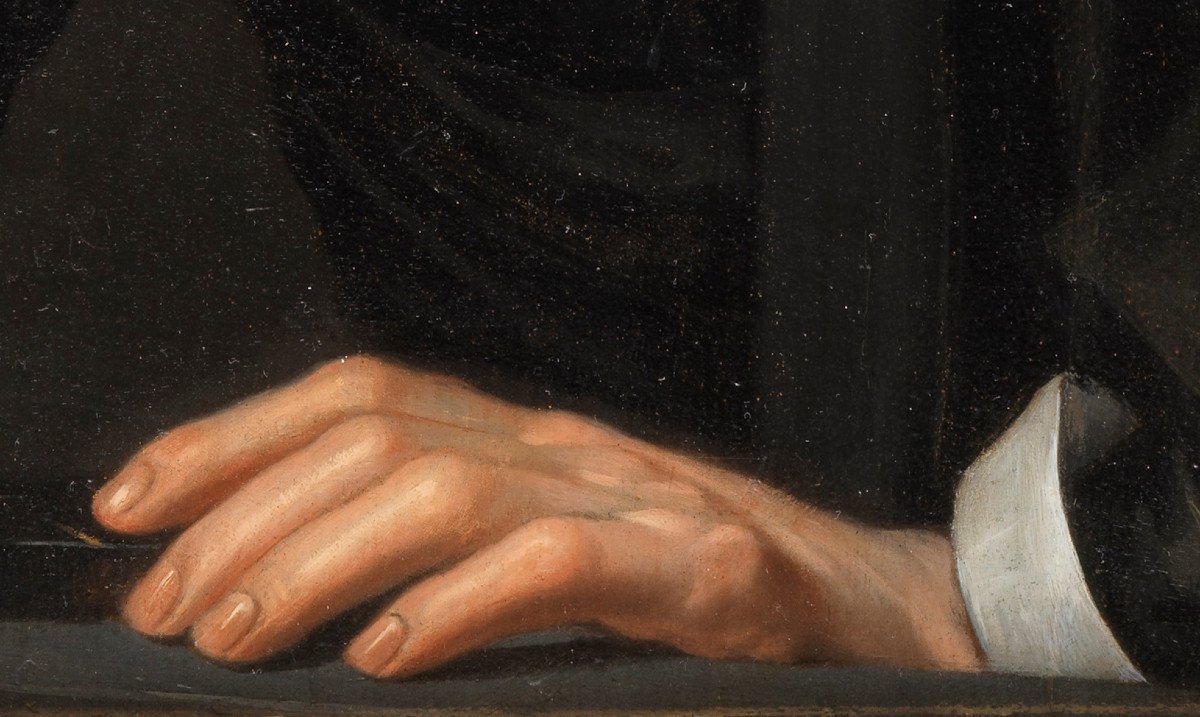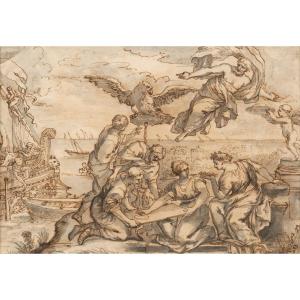Leaning on a window from which he seems to emerge thanks to a clever trompe l'oeil composition, a man looks at us. This character holds in his right hand a finely worked ring set with a precious stone which he seems to offer us through the window. By observing his left hand placed on the frame, a clue allows us to understand the meaning of this portrait. Indeed, his hand rests on a touchstone: a very hard mineral made up of black jasper which makes it possible to control the title of a precious metal. Thus the man portrayed makes a profession of goldsmith (we would say jeweler nowadays), as evidenced by the combination of the tool (the touchstone) and the manufactured object (the ring). This work is the second copy of a portrait that Werner van den Valckert made in 1617 for the goldsmith Bartholomeus Jansz van Assendelft. The latter had no doubt intended to celebrate his election as master of the goldsmiths' guild of Leyden the same year by having himself portrayed with the attributes of his trade. Preserved in the Rijskmuseum, the first portrait is signed and dated in the touchstone. The two paintings have a similar quality of execution and a strictly identical composition, which suggests that this is not a preparatory work but a copy made by the artist himself at the request. of the original sponsor, no doubt to offer it as a present to a member of his family or to his guild, as was customary to do at a time when the popularity of the portrait extended to lower middle class families. Werner van den Valckert's manner is part of a still relatively austere and spare style of portraiture in vogue in the Northern Netherlands at the beginning of the 17th century, mainly inspired by the art of Michiel Jansz van Mierevelt (The Hague, 1567 – Id., 1641). In this case, our painter focuses not on the expression of feelings but on the fair and meticulous realization of fabrics, the face and attributes. Dark hues dominate, both in the clothes and in the abstract background in front of which Bartholomeus Jansz van Assendelft is portrayed. However, unlike his contemporaries, van den Valckert innovated by introducing more dynamic poses into his portraits, for example by resorting to illusionist compositions as in this work.
We have chosen to present this rare portrait of a jeweler in an Italian frame in carved gilded and blackened wood.
Dimensions: 66 x 46 cm - 83 x 63 cm with the frame
Biography: Werner van den Valckert (The Hague, c. 1580 – Amsterdam, c. 1627) apprenticed with a stained glass artist whose daughter he married. Registered at the guild of Saint Luke in The Hague between 1600 and 1605, he produced numerous copper engravings. Having become master of the guild in 1612, he devoted himself almost exclusively to history painting and portraits. Although most of his clientele was made up of bourgeois from Amsterdam, he counted among his sponsors King Christian IV of Denmark and probably Stadtholder Frédéric-Henri de Orange-Nassau.
Bibliography:
- ADAMS, Ann Jensen, Public Faces and Privates Identities in Seventeenth-Century Holland: Portraiture and the Production of Community, Cambridge University Press, 2009.
- Dutch Portraits: The Age of Rembrandt and Frans Hals, (cat. exp. London, The National Gallery, June 27 - September 16, 2007), Ed. Quentin Buvelot, 2007.
- SLIVE, Seymmour, Dutch Painting 1600-1800, Yale University Press, 1995.
- THIEL (van), PJJ, “Werner Jacobsz. van den Valckert”, Oud Holland, 1983, Vol. 97, No. 3 (1983), p. 128-195.


























 Le Magazine de PROANTIC
Le Magazine de PROANTIC TRÉSORS Magazine
TRÉSORS Magazine Rivista Artiquariato
Rivista Artiquariato
